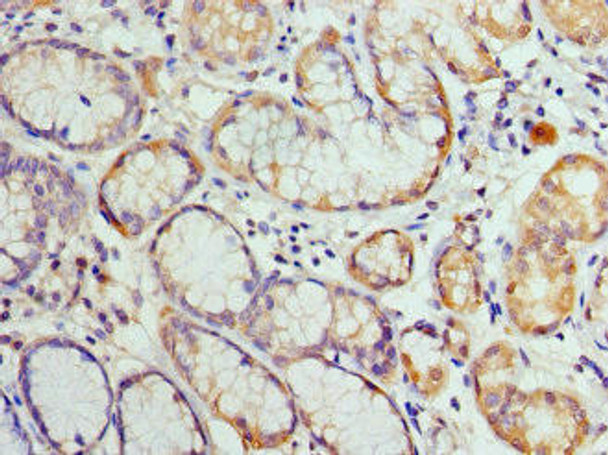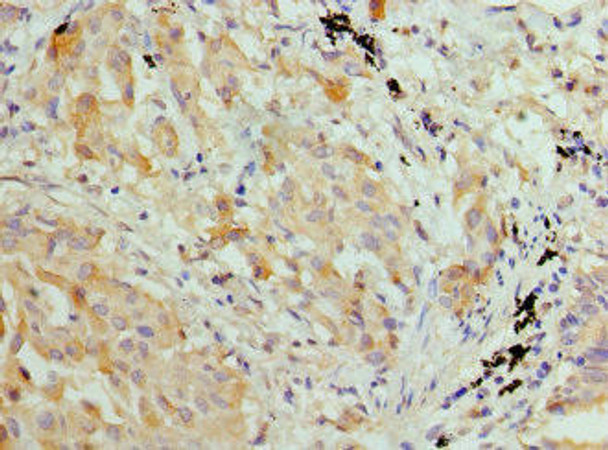Description
HIST2H3A Antibody (PACO46654)
The Hist2H3A Polyclonal Antibody (PAC04654) is a valuable tool for research involving Hist2H3A, a histone protein that plays a crucial role in chromatin structure and gene regulation. This antibody, produced in rabbits, is highly specific for human samples and has been validated for use in Western blot applications. By binding to the Hist2H3A protein, researchers can detect and analyze its expression in various cell types, making it well-suited for studies in epigenetics, cancer research, and developmental biology.Hist2H3A is a variant of histone H3, a key protein involved in packaging DNA into chromatin and regulating gene expression.
Changes in histone proteins like Hist2H3A have been linked to various diseases, including cancer and developmental disorders. Understanding the function and regulation of Hist2H3A is essential for unraveling the complexities of epigenetic mechanisms and their impact on health and disease. By using the Hist2H3A Polyclonal Antibody, researchers can delve deeper into the role of Hist2H3A in chromatin dynamics, gene regulation, and disease pathways, paving the way for new insights and potential therapeutic strategies in the field of epigenetics.
| Antibody Name: | HIST2H3A Antibody (PACO46654) |
| Antibody SKU: | PACO46654 |
| Size: | 50ug |
| Host Species: | Rabbit |
| Tested Applications: | ELISA, WB, IHC, IF |
| Recommended Dilutions: | ELISA:1:2000-1:10000, WB:1:1000-1:5000, IHC:1:20-1:200, IF:1:50-1:200 |
| Species Reactivity: | Human, Mouse |
| Immunogen: | Recombinant Human Histone H3.2 protein (108-136AA) |
| Form: | Liquid |
| Storage Buffer: | Preservative: 0.03% Proclin 300 Constituents: 50% Glycerol, 0.01M PBS, PH 7.4 |
| Purification Method: | >95%, Protein G purified |
| Clonality: | Polyclonal |
| Isotype: | IgG |
| Conjugate: | Non-conjugated |
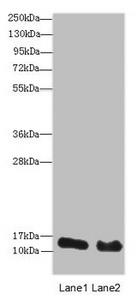 | Western blot. All lanes: HIST2H3A antibody at 14 µg/ml. Lane 1: Mouse liver tissue. Lane 2: Mouse kidney tissue. Secondary. Goat polyclonal to rabbit IgG at 1/10000 dilution. Predicted band size: 15 kDa. Observed band size: 15 kDa.. |
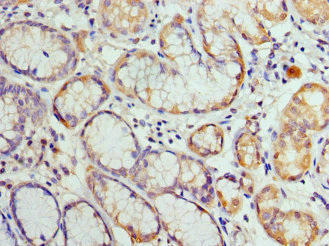 | Immunohistochemistry of paraffin-embedded human gastric cancer using PACO46654 at dilution of 1: 100. |
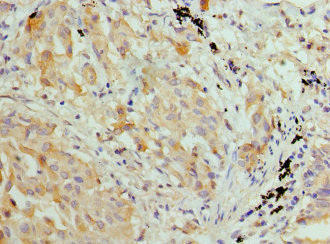 | Immunohistochemistry of paraffin-embedded human lung cancer using PACO46654 at dilution of 1: 100. |
| Background: | Core component of nucleosome. Nucleosomes wrap and compact DNA into chromatin, limiting DNA accessibility to the cellular machineries which require DNA as a template. Histones thereby play a central role in transcription regulation, DNA repair, DNA replication and chromosomal stability. DNA accessibility is regulated via a complex set of post-translational modifications of histones, also called histone code, and nucleosome remodeling. |
| Synonyms: | Histone H3.2 (Histone H3/m) (Histone H3/o), HIST2H3A; HIST2H3C; HIST2H3DH3F2 H3FM; |
| UniProt Protein Function: | HIST2H3A/C/D: Core component of nucleosome. Nucleosomes wrap and compact DNA into chromatin, limiting DNA accessibility to the cellular machineries which require DNA as a template. Histones thereby play a central role in transcription regulation, DNA repair, DNA replication and chromosomal stability. DNA accessibility is regulated via a complex set of post-translational modifications of histones, also called histone code, and nucleosome remodeling. The nucleosome is a histone octamer containing two molecules each of H2A, H2B, H3 and H4 assembled in one H3-H4 heterotetramer and two H2A-H2B heterodimers. The octamer wraps approximately 147 bp of DNA. During nucleosome assembly the chaperone ASF1A interacts with the histone H3-H4 heterodimer. Belongs to the histone H3 family. |
| UniProt Protein Details: | Chromosomal Location of Human Ortholog: 1q21.2 Cellular Component: extracellular region; nucleoplasm; nucleosome; nucleus Molecular Function:histone binding; protein binding Biological Process: blood coagulation; cellular protein metabolic process; chromatin silencing at rDNA; negative regulation of gene expression, epigenetic; nucleosome assembly; positive regulation of gene expression, epigenetic; RNA-mediated gene silencing |
| NCBI Summary: | Histones are basic nuclear proteins that are responsible for the nucleosome structure of the chromosomal fiber in eukaryotes. Two molecules of each of the four core histones (H2A, H2B, H3, and H4) form an octamer, around which approximately 146 bp of DNA is wrapped in repeating units, called nucleosomes. The linker histone, H1, interacts with linker DNA between nucleosomes and functions in the compaction of chromatin into higher order structures. This gene is intronless and encodes a replication-dependent histone that is a member of the histone H3 family. [provided by RefSeq, Aug 2015] |
| UniProt Code: | Q71DI3 |
| NCBI GenInfo Identifier: | 74758899 |
| NCBI Gene ID: | 653604 |
| NCBI Accession: | Q71DI3.3 |
| UniProt Secondary Accession: | Q71DI3,Q6B053, A2BDF6, A6NFS4, |
| UniProt Related Accession: | Q71DI3 |
| Molecular Weight: | 15,388 Da |
| NCBI Full Name: | Histone H3.2 |
| NCBI Synonym Full Names: | histone cluster 2, H3d |
| NCBI Official Symbol: | HIST2H3D |
| NCBI Protein Information: | histone H3.2 |
| UniProt Protein Name: | Histone H3.2 |
| UniProt Synonym Protein Names: | Histone H3/m; Histone H3/o |
| UniProt Gene Name: | HIST2H3A |
| UniProt Entry Name: | H32_HUMAN |


